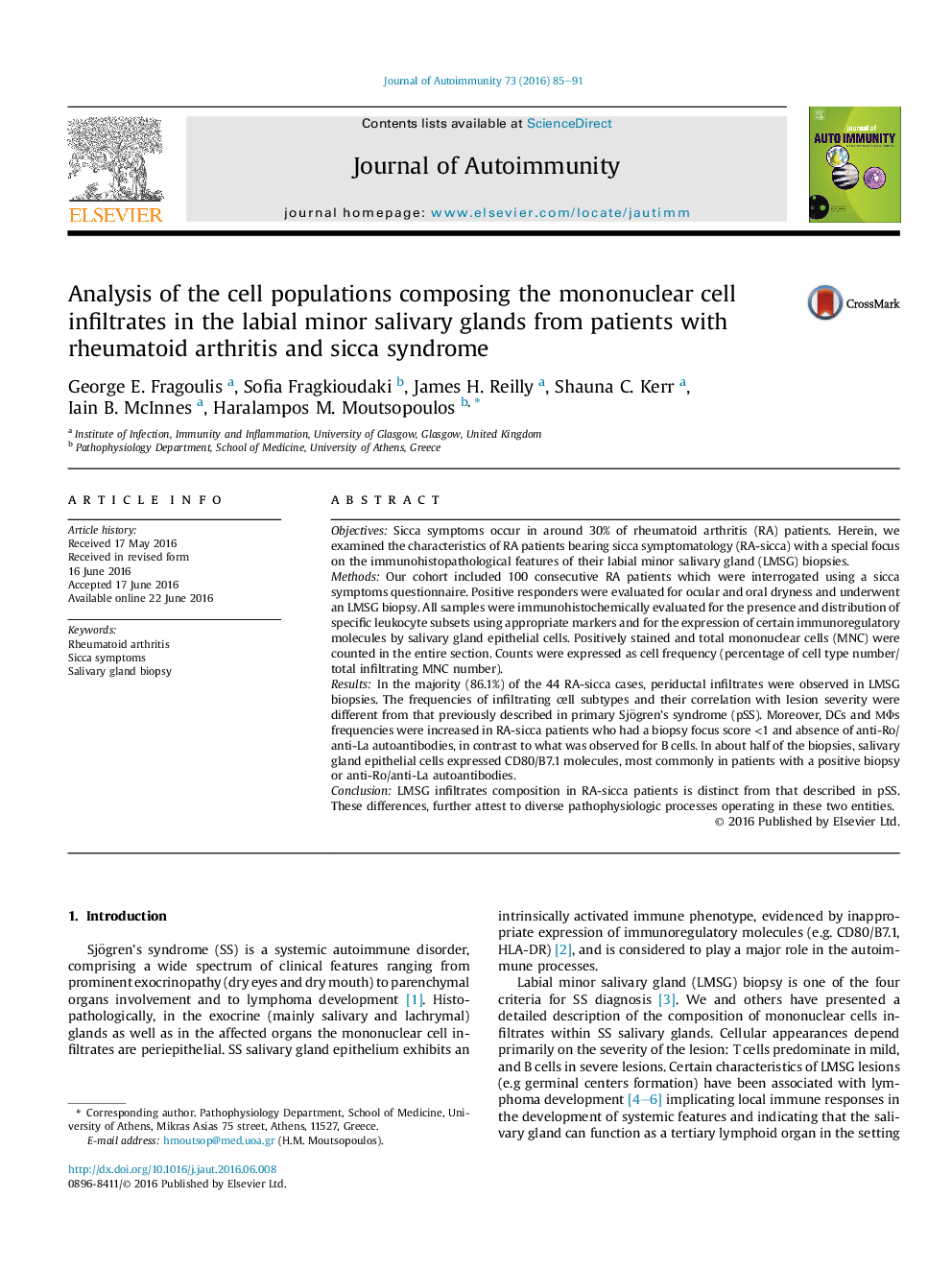| Article ID | Journal | Published Year | Pages | File Type |
|---|---|---|---|---|
| 3367641 | Journal of Autoimmunity | 2016 | 7 Pages |
•Sicca symptoms in about 40% of rheumatoid arthritis patients (RA-sicca).•RA-sicca patients seem to differ clinically from RA patients without sicca symptoms.•Salivary gland infiltrates differ between RA-sicca and primary Sjögren’s patients.
ObjectivesSicca symptoms occur in around 30% of rheumatoid arthritis (RA) patients. Herein, we examined the characteristics of RA patients bearing sicca symptomatology (RA-sicca) with a special focus on the immunohistopathological features of their labial minor salivary gland (LMSG) biopsies.MethodsOur cohort included 100 consecutive RA patients which were interrogated using a sicca symptoms questionnaire. Positive responders were evaluated for ocular and oral dryness and underwent an LMSG biopsy. All samples were immunohistochemically evaluated for the presence and distribution of specific leukocyte subsets using appropriate markers and for the expression of certain immunoregulatory molecules by salivary gland epithelial cells. Positively stained and total mononuclear cells (MNC) were counted in the entire section. Counts were expressed as cell frequency (percentage of cell type number/total infiltrating MNC number).ResultsIn the majority (86.1%) of the 44 RA-sicca cases, periductal infiltrates were observed in LMSG biopsies. The frequencies of infiltrating cell subtypes and their correlation with lesion severity were different from that previously described in primary Sjögren’s syndrome (pSS). Moreover, DCs and ΜΦs frequencies were increased in RA-sicca patients who had a biopsy focus score <1 and absence of anti-Ro/anti-La autoantibodies, in contrast to what was observed for B cells. In about half of the biopsies, salivary gland epithelial cells expressed CD80/B7.1 molecules, most commonly in patients with a positive biopsy or anti-Ro/anti-La autoantibodies.ConclusionLMSG infiltrates composition in RA-sicca patients is distinct from that described in pSS. These differences, further attest to diverse pathophysiologic processes operating in these two entities.
